5 common rose pests – expert tips for how to spot and deal with the problems
These are the best ways to stop a variety of pests from nibbling on leaves, flowers, and buds
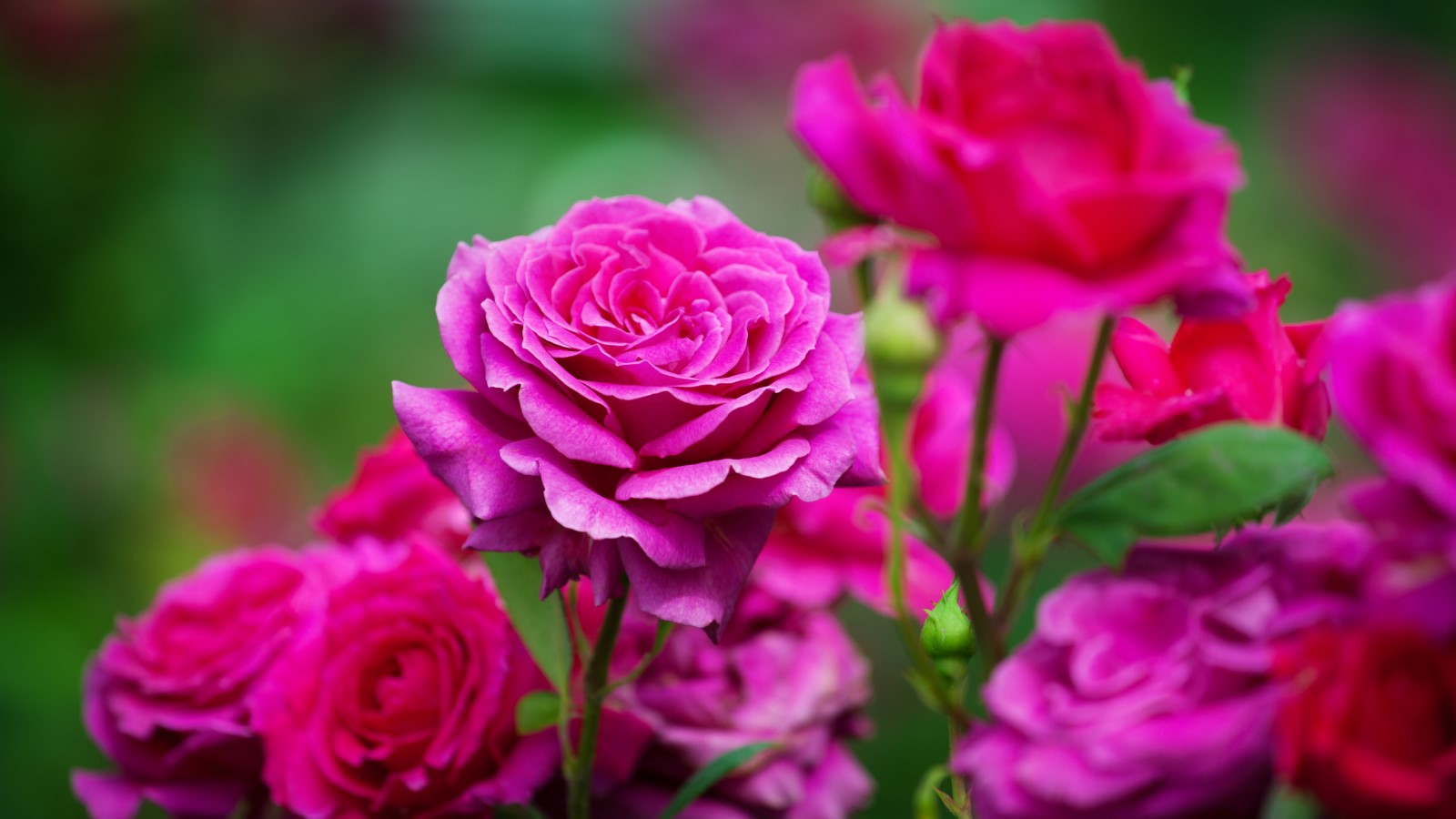

Roses look beautiful, smell fantastic, and come in a plethora of sizes and colors, it is no surprise that they are backyard heroes year-after-year. Unfortunately, there are lots of pests out there that are eager to munch on your favorite roses.
The likes of sawfly, aphids, beetles, and mites are out to suck the sap from your plants and nibble on the petals and buds. They can not only ruin the beauty of the plant but also affect its flowering.
It is not all bad news though as, if you have a rose garden, or just a few select roses in your yard, there are various methods you can use to combat these pests, keep them under control, and ensure your precious roses continue to bloom.
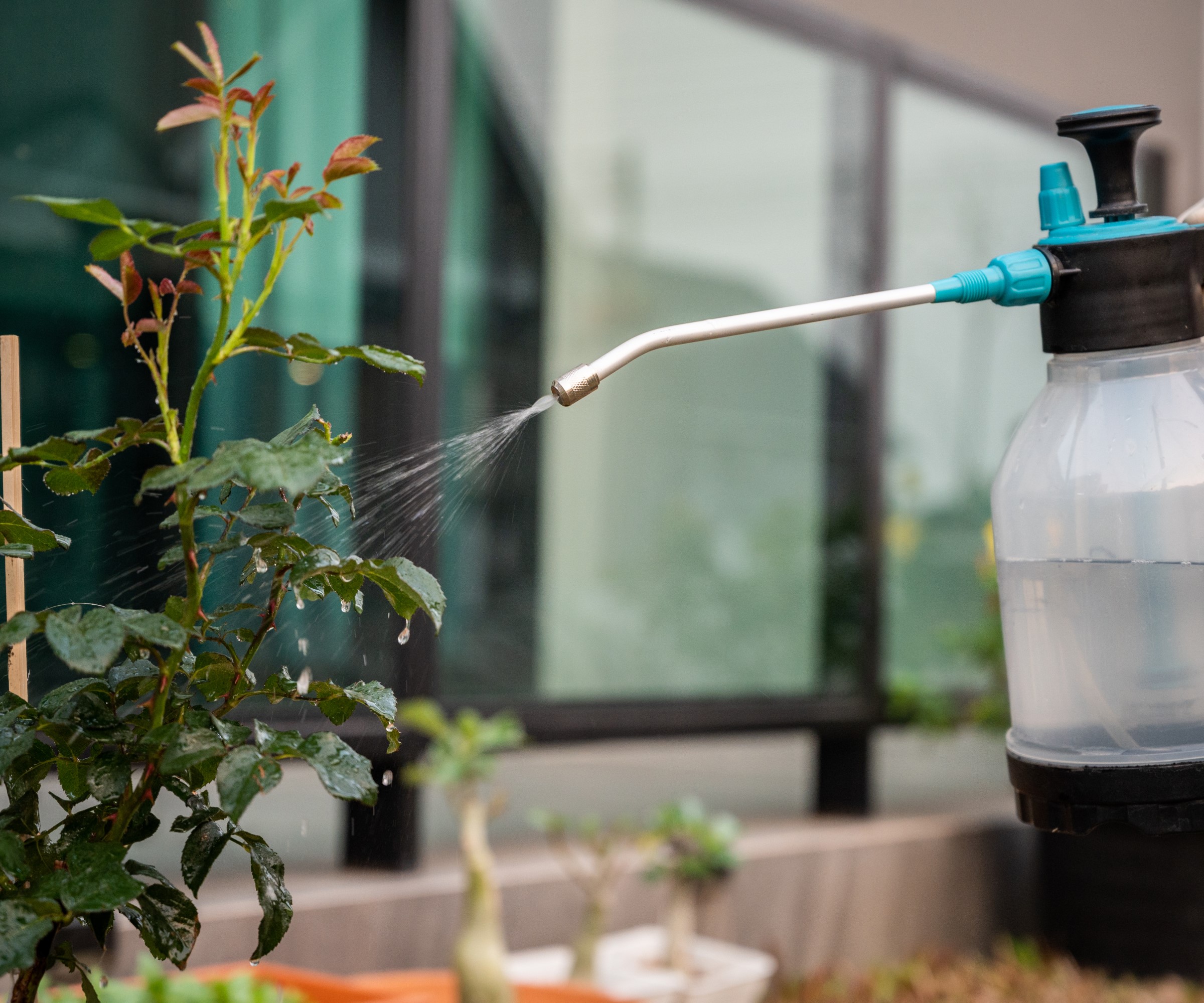
Rose pests can be sprayed with water, horticultural soap, or insecticides
Rose pests and how to control them
Roses remain one of the best landscaping shrubs to use. There are hundreds of species and several thousands varieties and cultivars in existence around the world. While there are such a plethora of different types of roses to choose from, whether you choose hybrid tea roses, climbing roses, shrub roses, or fragrant roses for your yard, they will all attract pests.
If you are designing a rose garden, or looking to add a pop of color into your space, then it pays to recognize the signs of the most common rose pests. From the time of planting roses onwards, you need to be vigilant throughout the plant’s life. Always be on the lookout for bugs or signs of nibbling. Do it when you are watering plants or when out deadheading roses, and if you see a bug then it is time to take prompt action.
We take a look at five of the most common rose pests you will encounter in your backyard, examining the signs to look out for and what can be done to deal with the problem.
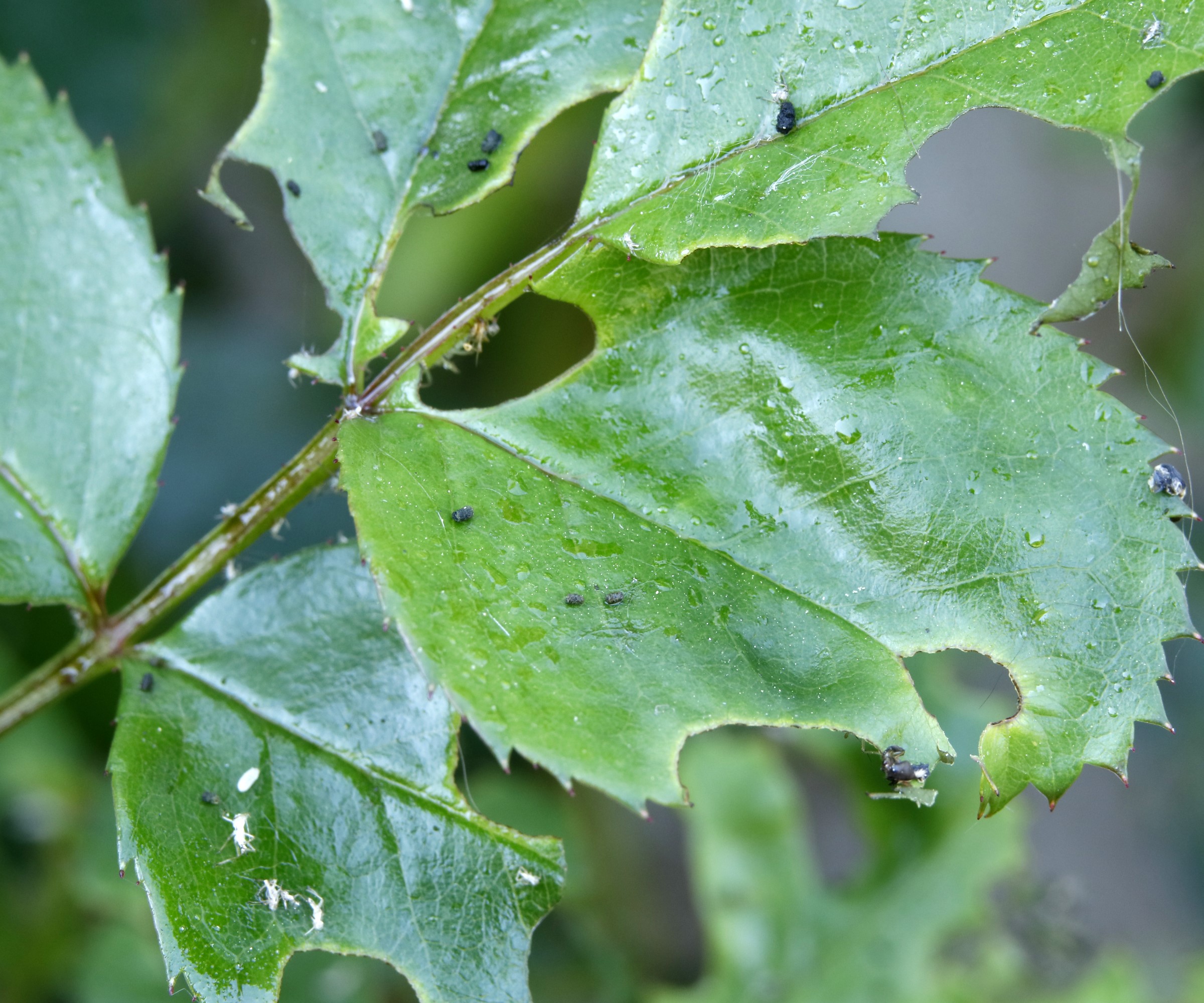
Leaves often show the signs of pest damage
1. Aphids
There are various aphid species that can feed on roses, but all suck the sap out of the new growth of buds, leaves, and stems. They congregate in large numbers on these new areas of growth and tender shoots, causing havoc and distorted growth. An aphid infestation can destroy a crop of rose flowers and the pests excrete honeydew, which is very sticky and can support the growth of sooty mould, a dark-colored fungus that can be seen on leaves.
Design expertise in your inbox – from inspiring decorating ideas and beautiful celebrity homes to practical gardening advice and shopping round-ups.
Ruth Hayes, gardens expert for Homes & Gardens, claims the ‘best way’ for how to get rid of aphids is to ‘squidge small colonies between your fingers before they have the chance to turn into a massive infestation’
She adds: ‘Aphids will suck sap from tender young shoots and buds, weakening the plant and potentially spreading disease. If groups are small, wipe them off with your hands or leave them for natural predators (birds and the larvae of ladybirds, lacewings and hoverflies), otherwise treat with an organic spray if there is a large infestation.’
Aphids can be treated with a stream of water to knock them off the plant, or the likes of insecticidal soap, available at Amazon, can be used. Consider using organic gardening approaches such as companion planting to encourage the natural predators of aphids into the backyard.

Ruth is the gardening editor of Amateur Gardening magazine and is horticulturally trained, with a qualification from the Royal Horticultural Society. Her work for Homes and Gardens and Amateur Gardening, the world's oldest weekly gardening publication, involves matching gardening tasks with each season, covering everything from sowing and planting, to pruning, taking cuttings, dealing with pests and diseases and keeping houseplants healthy.
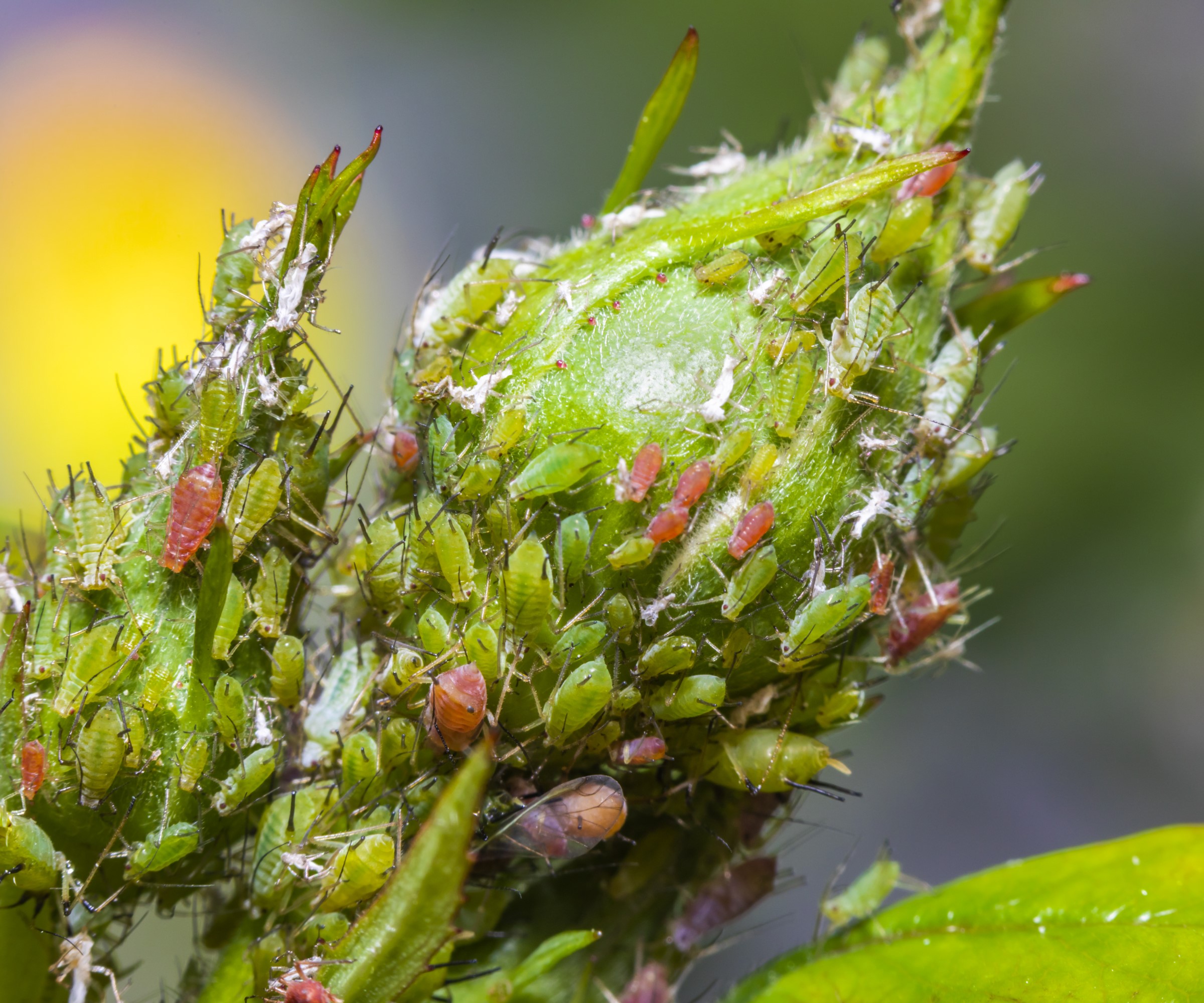
Aphids will suck sap from the rose bud
2. Spider mites
Spider mites are a common problem in hot and dry conditions and are not actually spiders. They are one of many types of mites and only called spider mites due to the webbing that they excrete, which is reminiscent of a spider’s web.
They are tiny and very difficult to spot, so it is the webbing or the damage they cause that you need to keep your eyes peeled for. The fine webbing will be seen between the undersides of leaves and affected leaves will turn yellow and limp before dropping off. This is because spider mites suck the fluids from leaf cells.
If you are wondering how to get rid of spider mites, you can try to attract predatory insects such as lacewings and lady beetles, or spray the bottom of leaves with a sharp stream of water. However, much damage may have been done by the time you identify the problem. Continue to wash the plants regularly until signs of mites have gone.
Insecticidal soap can also be applied and will need more than one application, you can make your own similar homemade bug spray using soap, oil, and water. Avoid using insecticides as the mixture is likely to kill all natural beneficial predators on the rose as well as the spider mites.
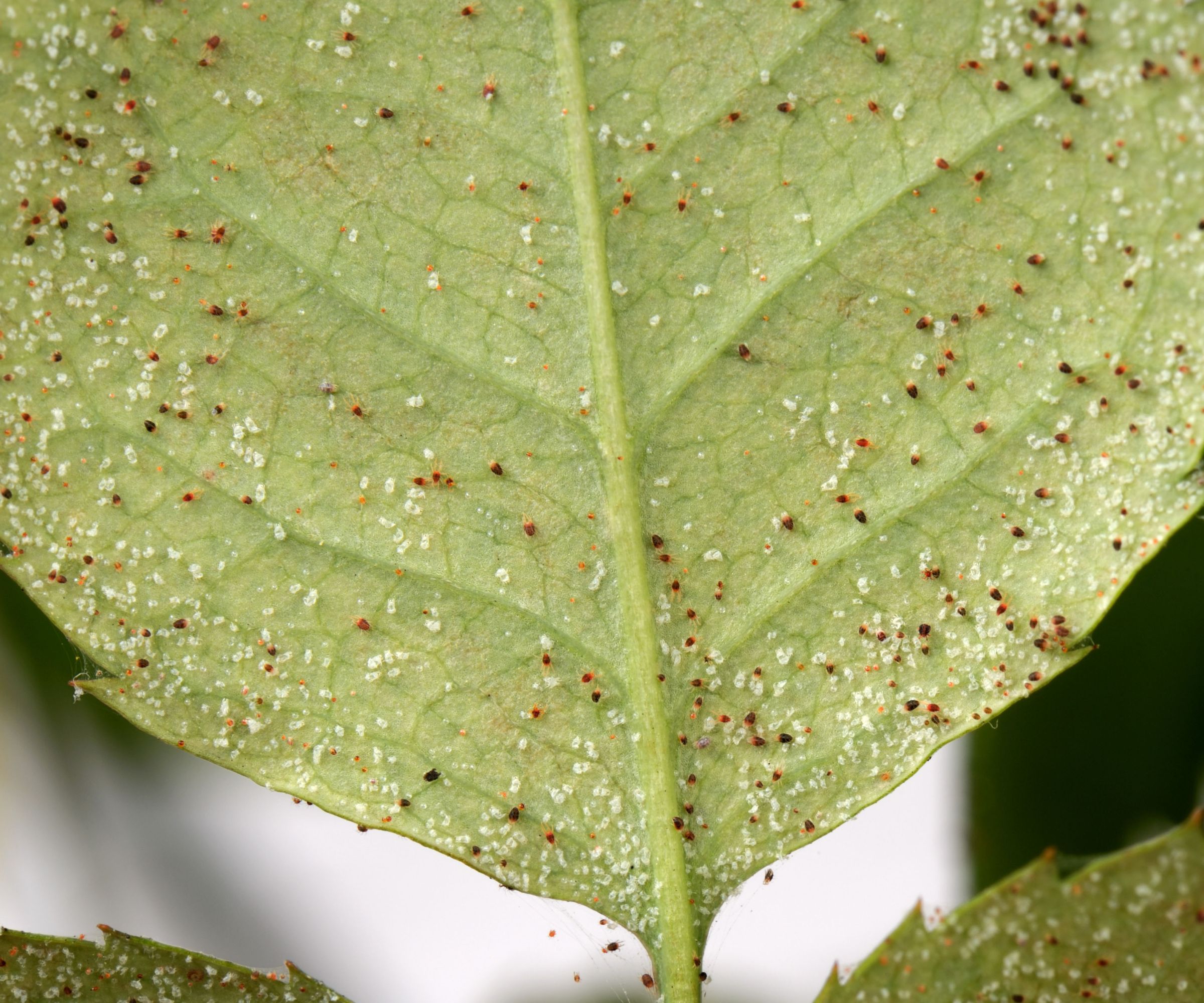
The presence of spider mites can be seen on the underside of a leaf
3. Sawfly
Sawfly is a troublesome pest for roses and the actual pest is the immature larval forms of sawflies. The larvae emerge after adults lay their eggs in soft young stems of roses, causing havoc by splitting stems and feasting voraciously on leaves.
John Negus, plants expert for Homes & Gardens, explains that the symptoms show in May, saying: ‘Damaged leaves roll inwards along their length, and unfortunately they remain that way for the rest of the season.’
Regular inspection is key to preventing sawfly damage and they tend to feed at night. You will see the larvae on the leaf’s surfaces between the veins and it pays to be quick as they are capable of leaving only a leaf skeleton behind.
John advises that the best way to tackle the larvae is to spray with an insecticide in early summer, or try to remove the larvae by hand and prune out affected stems. There are some varieties of roses, including ‘Peace’, ‘Albertine’, ‘Masquerade’ and ‘Queen Elizabeth’ that are more susceptible to this pest.
Spraying larvae with water, horticultural soap, or neem oil-based products, such as Neem Bliss available at Amazon, can help control them as they cannot get back on the plant once they are knocked off. Again, attracting birds or other predators of the larvae can also help control an infestation.

John has been a garden journalist for over 50 years and regularly answers readers' questions in Amateur Gardening magazine, including many about evergreen shrubs. He has also written four books and has delivered many talks over the years on horticulture.
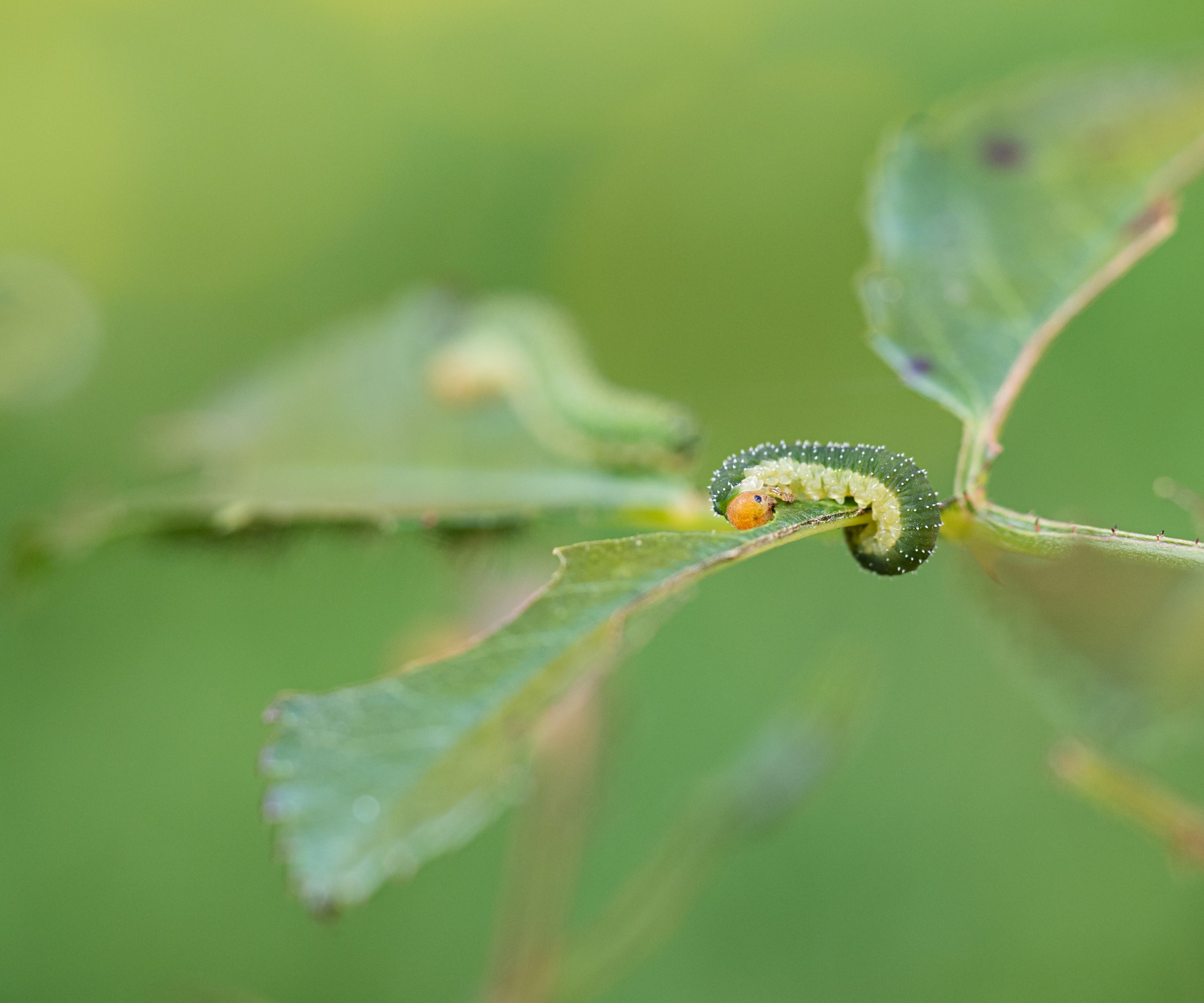
Leaves damaged by sawfly larvae will start to curl
4. Thrips
Thrips are tiny insects, less than a millimetre in length, but can cause lots of damage to roses. They suck sap out of the plants by scraping at the surface of cells, feeding on both leaves and petals. Thrips are most active during the early stages of summer, however, most often a gardener will spot the damage they have caused rather than the infestation of the insect.
Zahid Adnan, horticulturist and the founder of The Plant Bible, warns: ‘Infested roses may have silvery or discolored leaves, distorted flowers, and black droppings on the petals.’
Horticultural soap can be sprayed to try to get rid of thrips, however it needs to be applied before the pest nibbles its way into the buds. And it may need multiple sprayings to be truly effective against them. Neem oils are also good for controlling thrips. Any infested leaves or flowers that are identified should be removed from the rose and destroyed.
Keep any grass nearby short and remove any weeds from in the vicinity of the roses as a preventative measure against thrips flying onto your roses on the wind. Or consider planting bright flowers, such as marigolds, as trap plants to lure thrips onto them and away from your roses.
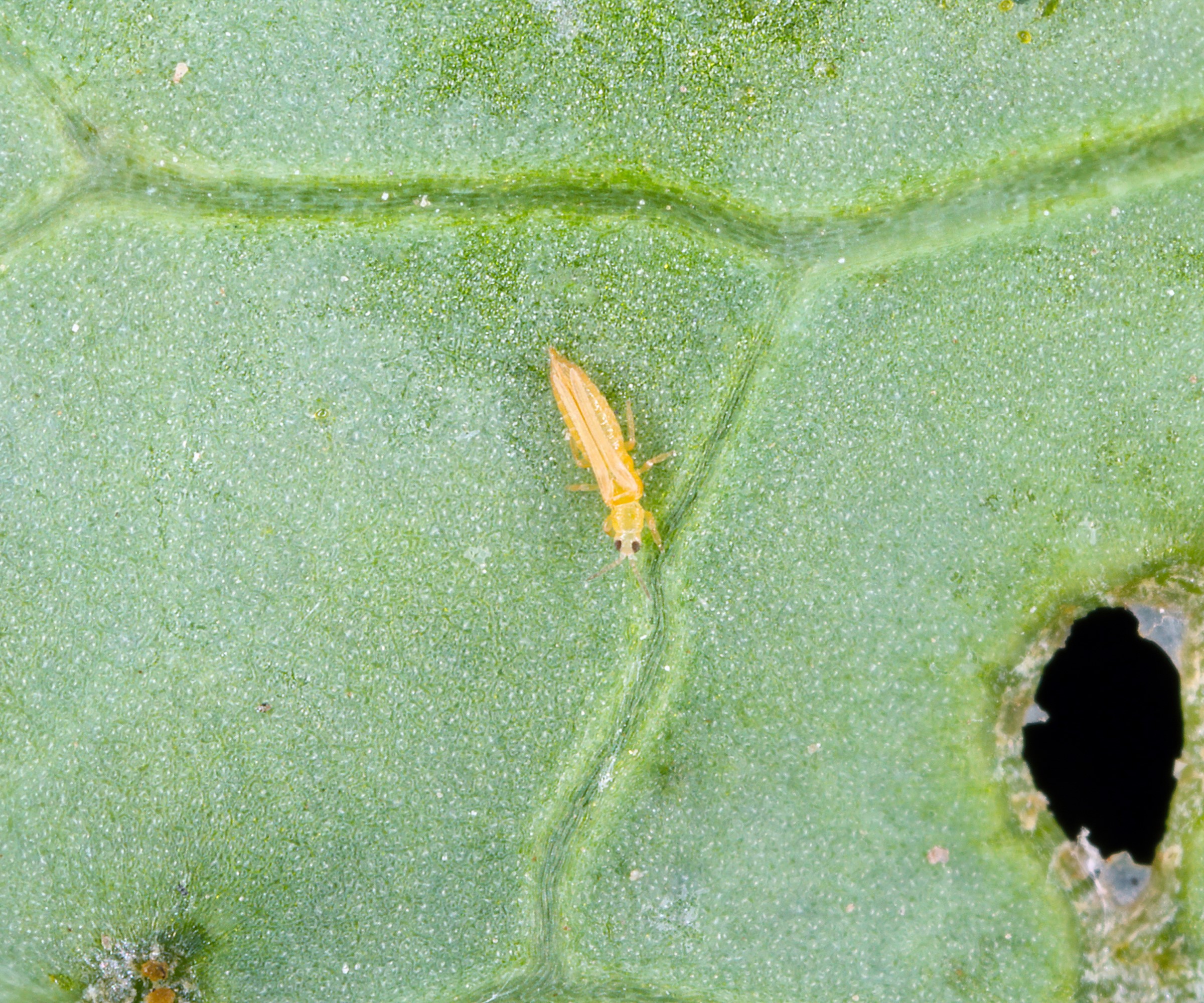
Thrips suck sap out of a leaf's cells
5. Japanese beetles
Japanese beetles can be devastating to roses and are prevalent from June through to August each year. It is often a six-week window when they are rife, but can be very destructive during that short time. They feed on the foliage, munching the tissue between the veins, and also attack the buds and flowers. The leaves can be left skeletal and flowers will show signs of holes in the petals, while buds may not open at all. It is not just roses that are affected, as it is thought Japanese beetles attack over 300 different plants.
When it comes to how to kill Japanese beetles, possibly the easiest way is to carefully pick them off your plants by hand and then put them in a bucket of soapy water. However, this will need to be done regularly as new beetles will emerge daily.
You can purchase Japanese beetle traps, available at Amazon, but these should be used carefully as they can actually bring in more beetles, which are attracted to the smell of dead and rotting beetles in the traps. If you use them, they need to be emptied regularly.
You can place thin netting over your roses or release parasitic wasps that can help deal with the beetles. Any use of garden insecticides would need to be done regularly to control an infestation, while it may lessen any damage it will not eradicate the pests completely.
The potential for rose pests should not halt ambitions to add roses to your backyard. They are some of the best fragrant flowers you can choose and a fantastic addition to any flower bed or herbaceous border, or even when grown in pots.
The key is to be vigilant, monitor your roses regularly as well as enjoy them. Consider checking for pests, and also rose diseases, as important as any other maintenance, whether it be watering, pruning roses, or fertilizing roses. And when you do see a problem, be sure to act quickly. That way you can save your precious blooms and still have a display to enjoy each summer.

Drew has worked as a writer since 2008 and was also a professional gardener for many years. As a trained horticulturist, he worked in prestigious historic gardens, including Hanbury Hall and the world-famous Hidcote Manor Garden. He also spent time as a specialist kitchen gardener at Soho Farmhouse and Netherby Hall, where he grew vegetables, fruit, herbs, and cut flowers for restaurants. Drew has written for numerous print and online publications and is an allotment holder and garden blogger. He is shortlisted for the Digital Gardening Writer of the Year at the 2025 Garden Media Guild Awards.